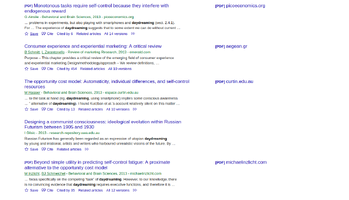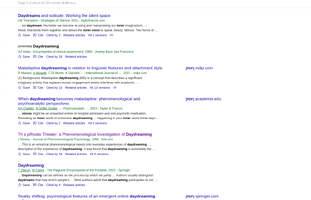2
Background
This research was commissioned by the Northern Rock Foundation to
explore how male victims and perpetrators of domestic violence may differ
from female victims and perpetrators with regard to the nature and number
of domestic violence incidents recorded by the police. The report explores
‘who does what to whom’, taking into account both context and
consequences.
The research provides a unique picture of the nature of domestic
violence reported to the police. Domestic violence is a pattern of behaviour
over time, and the research reflects this by building a longitudinal picture
(tracking cases over six years) rather than focusing merely on a snapshot or a
single incident of domestic violence.
In previous research involving the North East of England the vast
majority of domestic violence perpetrators recorded by the police were
found to be men (92%) and their victims mainly female (91%). Many more
repeat incidents were also recorded for male than for female perpetrators
(Hester et al. 2006)1. This pattern has been found to be typical in police
records across many areas of England and reflects the greater impact on
women of such abuse. (Hester & Westmarland 2005; Westmarland & Hester
2007)2.
Where policy is concerned, since the 1990s there have been a number
of initiatives aimed at developing criminal justice approaches to domestic
violence. This has involved a focus on pro-arrest and increases in
prosecution and conviction. The pro-arrest policy was put forward in the
Revised Home Office Circular 19/2000 and more recently in the
Association of Chief Police Officers (ACPO) guidance (Centrex 2004).
These documents require police to: take positive action in all domestic
violence cases by exercising any powers of arrest where they exist and where
it is necessary and proportionate in order to carry out an effective
investigation and/or prevent further offences. Alongside this policy it is
recognised that the police may be faced with conflicting accounts and
counter allegations of domestic violence from the two parties involved. The
ACPO guidance urges officers to identify the primary aggressor in such
situations and to avoid arresting both parties. For instance, dual arrest
1 Hester, M., Westmarland, N., Gangoli, G., Wilkinson, M., O’Kelly, C., Kent, A. & Diamond, A. (2006)
Domestic Violence Perpetrators: Identifying Needs to Inform Early Intervention, Bristol: University of Bristol in
association with the Northern Rock Foundation and the Home Office.
2 Hester, M. & Westmarland, N. (2005) Tackling Domestic Violence: Effective Interventions and Approaches.
Home Office Research Study 290, London: Home Office; Westmarland & Hester (2007) Time for
Change, Bristol: University of Bristol. In other police force areas the proportion of male victims and
female perpetrators may appear much higher due to different recording practices by the police. For
instance, if incidents are not deemed to be crimes (e.g. arguments), or if counter allegations are made,
both parties may be entered on the same police record as victims and perpetrators. This has been the
recording practice for instance in Northampton, resulting in 57 per cent of instances specifically
involving female victims (Hester & Westmarland 2005: 108).
3
should not be made in instances of counter allegation where one party is
acting in self-defence.
Criminal justice and other agencies have also been encouraged to
increase partnership working in order to support and provide safety for
victims. The Domestic Violence, Crimes and Victims Act 2004 has continued this
approach, placing further emphasis on criminalizing domestic violence and
increasing the possibility of arrest of perpetrators in domestic violence
situations (Hester et al. 2008)3.
While the majority of incidents of intimate partner domestic violence
recorded by the police involve male-to-female abuse, little is known about
the nature of the incidents where men are recorded as victims and women as
perpetrators, nor about the circumstances where both partners are recorded
as perpetrators. This research was commissioned by the Northern Rock
Foundation to fill this gap and to examine the implications of gender where
individuals are identified as domestic violence perpetrators by the police.
The research is especially important as it is the first study in the UK to
examine the issue of gender and domestic violence perpetrators in any detail
and over time.
Other studies and issues
National representative surveys indicate that while men and women in
heterosexual relationships may experience similar domestic violence
behaviours, there are also important differences. For instance, women
experience a greater amount and more severe abuse from male partners. The
recent British Crime Survey data on partner abuse (Povey et al. 2008)4 found
that a fifth of men, 22%, and a third of women, 33%, had experienced abuse
from a partner since the age of 16, and that the physical and emotional
impacts on female victims were significantly greater than on male victims.
Echoing this gender distinction regarding the impacts of domestic violence
and abuse, men tended not to report partner abuse to the police because
they considered the incident “too trivial or not worth reporting” (ibid.: 67).
Data on the prevalence of heterosexual domestic abuse in general
populations thus show larger differences between men’s and women’s
experiences of domestic violence when impact is also taken into account. As
a consequence, women are the largest group to seek help and be in contact
with services5. Based on research with female victims, we may also expect
that domestic violence reported to the police involves behaviours (whether
physical, sexual, psychological, emotional, verbal, financial etc.) used as an
3 Hester, M., Westmarland, N., Pearce, J. and Williamson, E. (2008) Early evaluation of the Domestic Violence,
Crimes and Victims Act 2004, Ministry of Justice Research Series 14/08. London: Ministry of Justice.
4 Povey, D. (Ed.), Coleman, K., Kaiza, P., Hoare, J. and Jansson, K. (2008) Homicides, Firearm Offences and
Intimate Violence 2006/07 (Supplementary Volume 2 to Crime in England and Wales 2006/07). Home Office
Statistical Bulletin 3/08.
http://www.homeoffice.gov.uk/rds/pdfs08/hosb0308.pdf.
5 Hester & Westmarland (2005) see footnote 2 above.
4
ongoing pattern of fear and coercive control by one person against another
with whom they have or have had a relationship6. Such ‘archetypal’ domestic
violence (or ‘intimate terrorism’7) will usually involve one partner being
violent, involve frequent abuse, and is likely to escalate and to result in
serious injury. Within this context it has been found that women, in
particular, may use ‘violent resistance’ against violent male partners8.
Echoing this, women’s use of violence has been found in a number of
studies to be defensive or retaliatory rather than initiating9.
In the US a pro-arrest policy was implemented from the early 1990s,
and has been taken further than in the UK, with mandatory arrest and
prosecution in some US locations. The approach has resulted in a notable
increase in the number of women being arrested for perpetrating domestic
violence in the US. DeLeon-Granados et al. (2006)10 suggest that this
increase may be the result of the police becoming more ‘real’ about violence
where they previously minimised that by women. Also, that male
perpetrators may be manipulating the system resulting in disproportionate
arrests of women. Miller (2001)11, for instance, found that the men may ring
the police first in order to pre-empt women asking for help.
In addition, a systematic review of the literature has found that men
may be over-reporting instances of being victims of domestic violence while
at the same time being perpetrators of domestic violence. The alcohol use of
one or both partners can also impact on the boundaries between victim and
perpetrator with subsequent difficulties in assessing risk and in
determination of who is the primary aggress












